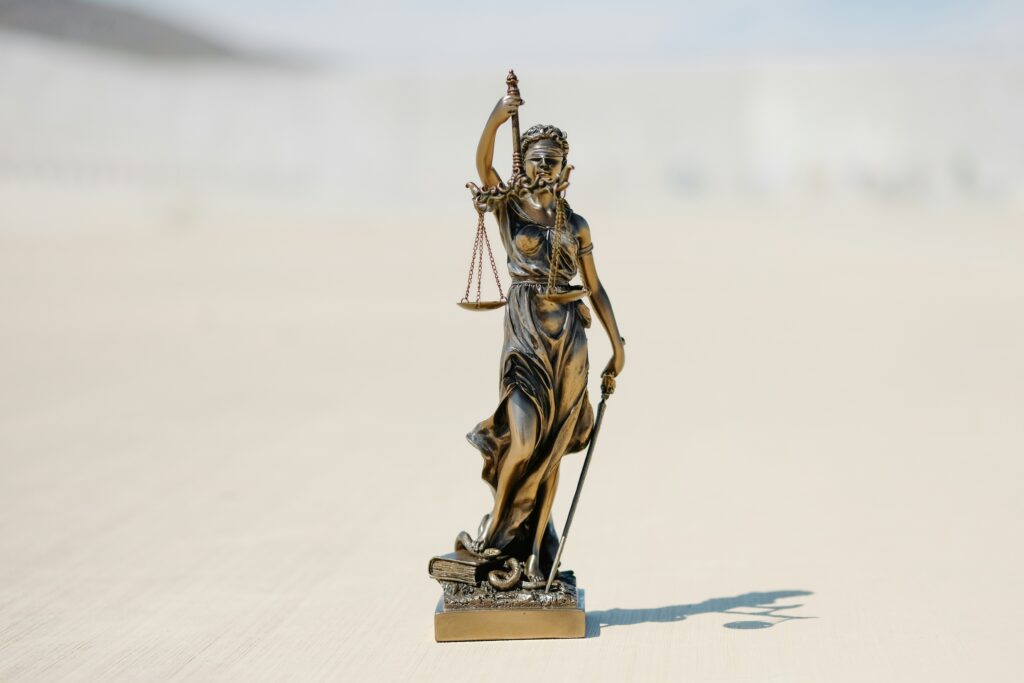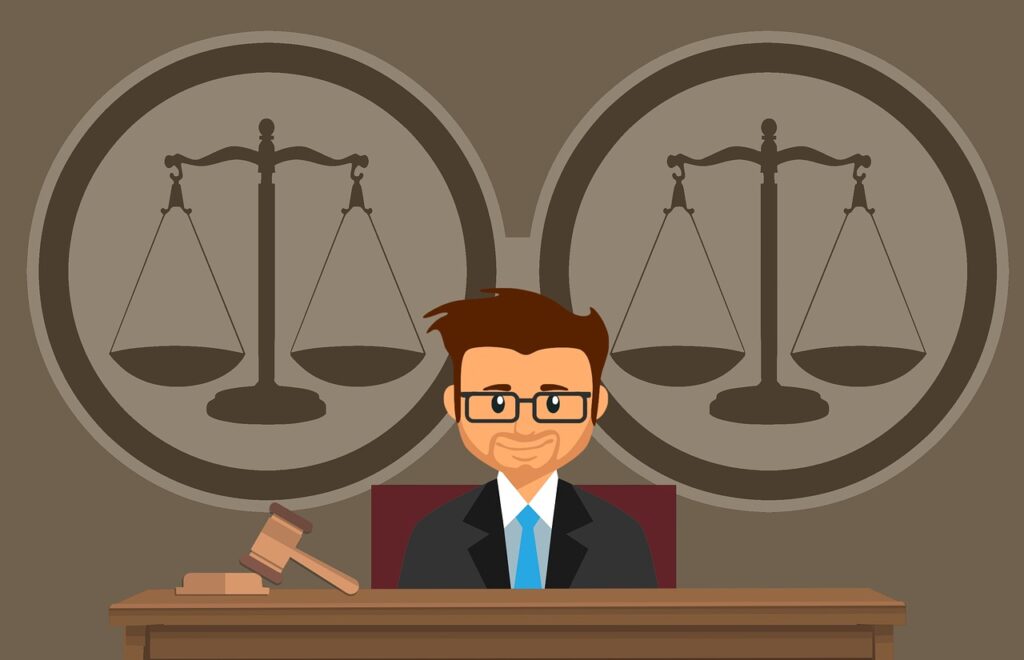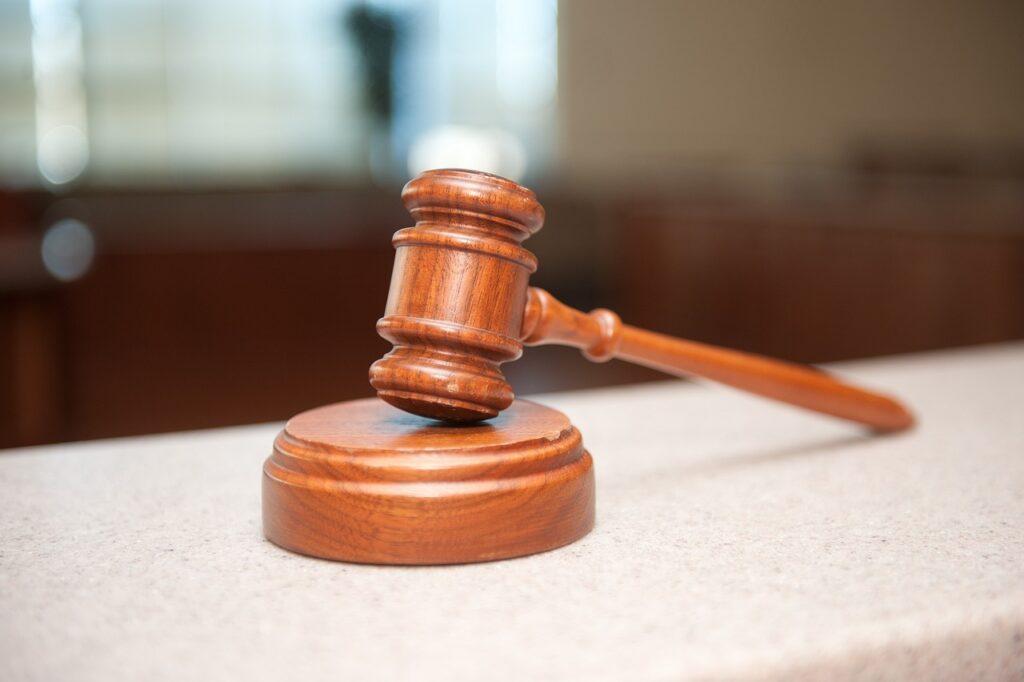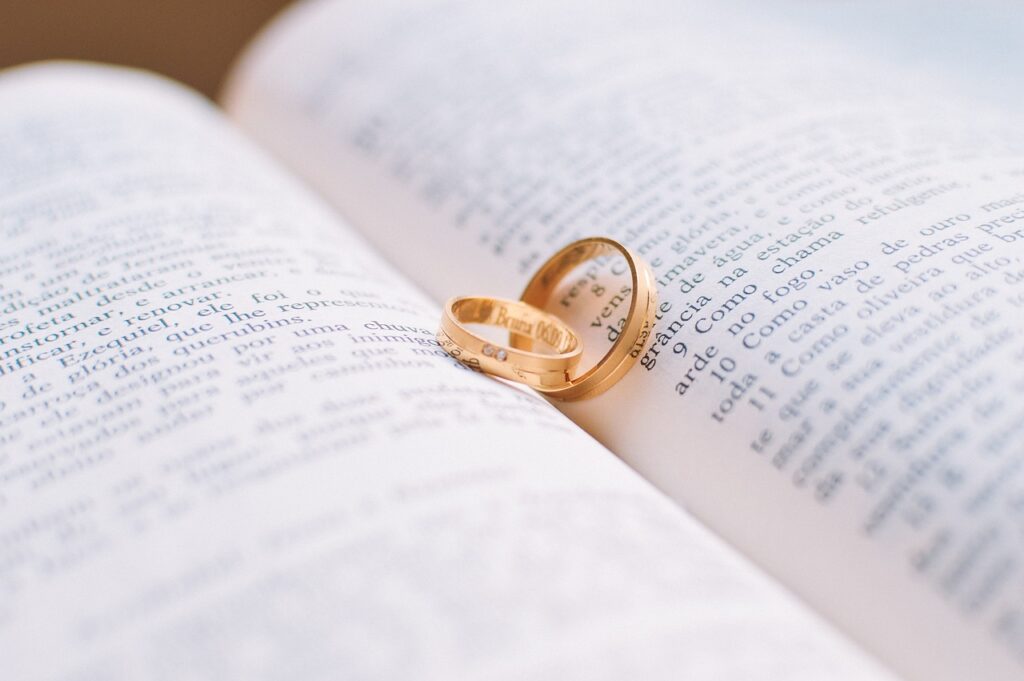Published On: 18th July, 2024
OVERVIEW OF THE CASE
This case originated from multiple petitions filed across Indian High Courts seeking legal recognition of the rights of LGBTQIA+ couples to marry. These petitions were filed by individuals and couples who were denied the legal and societal benefits associated with marriage due to their sexual orientation or gender identity.
Among the petitioners were Supriyo Chakraborty and Abhay Dang, who had been in a committed relationship for years and sought legal recognition of their union. They, along with others, argued that the absence of such recognition violated their fundamental rights.
The Supreme Court took cognizance of nine similar petitions pending before the Delhi and Kerala High Courts and decided to transfer all these petitions to itself for a comprehensive hearing. Given the significant constitutional questions involved, the Supreme Court referred these petitions to a five-judge constitutional bench in March 2023 for judicial review.
FACTS OF THE CASE
- In the landmark case Navtej Singh Johar and Ors. vs. Union of India[1], the Supreme Court of India declared Section 377 unconstitutional concerning consensual relationships between queer individuals. “The Court determined that Section 377 violated Articles 14 (Right to Equality), 15 (Prohibition of Discrimination), and 19 (Freedom of Expression) of the Constitution, as it discriminated based on sexual orientation and infringed upon sexual privacy. Since this decision, various petitions have emphasized the need to extend a comprehensive range of constitutional rights to the queer community, including the rights to choose one’s partner autonomously, sexual privacy, and dignity”.
- Following this ruling, multiple petitioners approached different High Courts across India, seeking the legal recognition of marriage for LGBTQIA+ couples. They argued that the non-recognition of these marriages amounted to discrimination, infringing upon their fundamental constitutional rights. The petitioners asserted that recognizing the right to marry would enable the LGBTQIA+ community to exercise their freedoms of speech and expression, privacy, autonomy, and dignity. Additionally, some petitioners sought equal recognition to achieve social sanctity and access the explicit and implicit benefits of legally recognized marriage under the Special Marriage Act (SMA) and Foreign Marriage Act (FMA). Overall, the petitioners argued that the existing legal framework discriminates against the LGBTQIA+ community by denying them the right to marry, a civic institution available to heterosexual couples.
- The Court consolidated twenty connected petitions filed across various High Courts by fifty-two individuals, including seventeen LGBTQIA+ couples. In admitting the case, the Court acknowledged that despite the decriminalization of LGBTQIA+ sexual relationships, discrimination and violence persisted against these individuals. Given the significance of the issue, the matter was assigned to a Five-Judge Constitution Bench for deliberation.
ISSUES
- “Whether the denial of marriage rights to same-sex couples violates Article 14 of the Indian Constitution, which guarantees equality before the law and equal protection of the laws”?
- Whether the non-recognition of same-sex marriages constitute discrimination on the grounds of sex under Article 15 of the Indian Constitution?
- Whether the denial of marriage rights to same-sex couples infringes on their right to life and personal liberty under Article 21, which includes the right to marry a person of one’s choice.
PETITIONERS ARGUMENTS
- Fundamental Rights Violation: “Petitioners argue that excluding sexual and gender minority couples from marriage laws violates their fundamental rights under the Special Marriage Act (SMA) and the Foreign Marriage Act (FMA), which they claim are discriminatory. They invoke Article 32 of the Indian Constitution, asserting their right to seek protection from the Supreme Court.”
- Constitutional Morality: “Petitioners argue that laws should reflect evolving societal values and promote social change. Citing Badshah v. Urmila Badshah Godse (2014)[2] and other cases, they contend that restrictions based on morality must be rational and tolerant of unpopular views. Fundamental rights are meant to be protected from majoritarian bias, as seen in Puttaswamy v. Union of India (2017)”[3].
- Right to Equality (Article 14): “The Supreme Court has ruled that laws failing to protect sexual orientation and gender identity are irrational and violate Article 14. The principle of substantive equality, recognizing diverse family structures, was upheld in cases like Col. Nitisha v. Union of India (2021)”[4] and Deepika Singh v. Central Administrative Tribunal (2022)[5].
- “Article 15 protects against discrimination, including based on sexual orientation and gender identity. The Court has emphasized strict scrutiny to eliminate discrimination rooted in cultural stereotypes, as in Anuj Garg v. Hotel Association of India (2007)”[6].
- “This includes the full expression of sexual orientation and gender identity. The choice of marital partner is part of this freedom, upheld in cases like Vikas Yadav v. State of Uttar Pradesh (2016) and Shafin Jahan v. Ashokan K.M. (2018).”
- “Encompasses dignity, privacy, and personal autonomy. The Supreme Court has recognized these rights for sexual and gender minorities, emphasizing the right to choose a marital partner in cases like Puttaswamy v. Union of India (2017)”[7].
- “Petitioners argue that the freedom to choose a marital partner is part of this freedom. They contend that the State should not endorse exclusively heterosexual marriage norms, as highlighted in Indian Young Lawyers Association v. State of Kerala (2019)”[8].
- Right to Marry: “Building on cases like NLSA v. Union of India (2014)[9] and Navtej Singh Johar v. Union of India (2018), petitioners argue for extending the right to marry and establish a family to sexual and gender minorities based on Articles 14, 15, 19, 21, and 25.”
- Representation and Heirs: “Petitioners emphasize the need for legal recognition of marital relationships to formalize access to rights and obligations, advocating for the right to nominate anyone as ‘next of kin,’ expanding the scope of legal heirs beyond biological or adoptive families.”
RESPONDENTS ARGUMENTS
- Fundamental Rights: “The Union Government contends that denying marriage rights to sexual and gender minority individuals does not violate fundamental rights. They cite Navtej Singh Johar v. UOI (2018)”[10], where the Supreme Court decriminalized homosexual conduct but did not legitimize same-sex marriages. “They argue that this distinction ensures social stability, aligning with Article 14’s equality clause, and does not constitute discrimination under Article 15. Additionally, they state that Article 19 does not obligate the state to recognize same-sex marriages, and Article 21 does not implicitly approve them, referencing Shafin Jehan vs. Asokan K.M. (2018)”[11].
- Right to Life and Personal Liberty (Article 21): The government argues that these rights are subject to the procedure established by law, which currently limits marriage recognition to opposite-sex couples. They emphasize the public implications of marriage, asserting that it is not merely a private affair.
- Right to Freedom of Conscience and Religion (Article 25): The government claims that Article 25 protects personal laws, as reaffirmed in Shayara Bano v. UOI (2017)[12].
- Constitutional Exception to Fundamental Rights: “Referencing Javed v. State of Haryana (2003)[13], the government argues that fundamental rights should be read alongside the Directive Principles of State Policy and Fundamental Duties, allowing legitimate state interests to justify restrictions on these rights.”
- Legitimate State Interests: “The government maintains that the historical, religious, and social value of opposite-sex marriage demonstrates a legitimate state interest in preserving this norm. They cite cases such as Dalmia Cement (Bharat) Ltd. v. UOI (1996)”[14] and Mr ‘X’ v. Hospital ‘Z’ (1998)[15] to support this argument.
- Social Values: The government contends that marriage involves more than just a legal bond; it encompasses social and moral obligations crucial for child-rearing. They argue that while same-sex relationships are decriminalized, they do not align with the Indian family unit structure.
- International and Comparative Law: The government asserts that Western legal decisions should not influence Indian law, as they lack a basis in Indian Constitutional jurisprudence.
- Legislative Policy: “The government points to various legislative acts (e.g., Christian Marriage Act, Parsi Marriage and Divorce Act, Special Marriage Act, Hindu Marriage Act, Foreign Marriage Act) to demonstrate clear legislative intent to limit marriage to opposite-sex couples. They argue that judicial reinterpretation should not contradict clear legislative policies, citing Mr ‘X’ v. Hospital ‘Z’ (1998) and Reema Aggarwal v. Anupam (2004)”[16]. They conclude that marriage legislation should reflect societal values, cultural history, and public acceptability, which can only be enacted by the legislature, not the judiciary.
JUDGEMENT
In the case of Supriyo Chakraborty vs. Union of India, a Five-Judge bench of the Supreme Court unanimously ruled that the right to marriage is not a fundamental right. They clarified that while the right to choose a partner is a fundamental right, the right to marry is not, and only the State can legislate to allow queer couples to marry. Although the Court discussed the rights of queer couples to form unions, the majority concluded that the State is not required to legally recognize such unions. The Court analyzed the concept of marriage, emphasizing that the benefits of marriage stem from State recognition, not from marriage itself. Therefore, for queer couples to receive similar benefits, parliamentary legislation is necessary, which is outside the Court’s jurisdiction.
The Court determined that the lack of recognition for LGBTQIA+ unions does not violate individuals’ rights to privacy, choice, and autonomy under Articles 15 and 21 of the Constitution. It reaffirmed the rights of LGBTQIA+ individuals to bodily integrity and personal autonomy, allowing them to make decisions about their relationships and personal lives. While acknowledging the naturalness of queerness and the discrimination faced by the queer community, the majority did not grant civil union status to LGBTQIA+ unions.
Regarding the “Special Marriage Act (SMA) and Foreign Marriage Act (FMA), the Court noted that transgender and intersex persons in heterosexual relationships could marry under these laws. It stated that many aspects of marital relationships reflect constitutional values like dignity, self-determination, and personal liberty. Thus, everyone has the right to sexual privacy and freedom from coercion by families, State agencies, and others”. “The Court upheld the right to express and determine one’s sexual orientation and gender identity without discrimination, confirming the constitutional validity of these provisions and including transgender and intersex individuals within their scope.”
In a 3:2 verdict, the Court concluded that Articles 19, 21, and 25 do not impose a positive obligation on the State to recognize civil unions equivalent to marriage. The majority reaffirmed the right to choose, cohabit, and enjoy physical intimacy but did not require the State to recognize LGBTQIA+ unions or democratize private spaces. “The dissenting opinion argued that the State has a positive obligation to democratize the private sphere and can override privacy rights to prevent discrimination against queer individuals. The minority opinion also asserted that the right to form civil unions is inherent in Articles 19 and 21 and that the equality principles in Articles 14 and 15 mandate extending this right to all individuals, regardless of sexual orientation and gender.”
CONCLUSION
In the case of Supriyo Chakraborty vs. Union of India, the Supreme Court delivered a nuanced verdict regarding the rights of LGBTQIA+ individuals in India. The Court unanimously held that the right to marriage is not a fundamental right under the Indian Constitution. It emphasized the distinction between the right to choose a partner and the right to marry, asserting that while the former is a fundamental right, the latter requires legislative action by the State. The Court examined the concept of marriage, its societal implications, and the benefits conferred by State recognition. It concluded that these benefits stem from legal recognition by the State and not from the inherent nature of marriage itself. Therefore, for queer couples to receive similar benefits, legislative action is necessary, which is outside the Court’s jurisdiction.
In conclusion, the Supreme Court’s verdict in Supriyo Chakraborty vs. Union of India recognized significant rights for LGBTQIA+ individuals but stopped short of mandating the State to legally recognize their unions. The decision highlighted the need for legislative action to address the legal recognition and associated rights of queer couples in India.
REFERENCES
- Supriyo @ Supriya Chakraborty & Anr. v. Union of India [2023] SC 36593 (India)https://main.sci.gov.in/supremecourt/2022/36593/36593_2022_1_1501_47792_Judgement_17-Oct-2023.pdf accessed 10 June 2024.
- Suchi Sharma, ‘Same-Sex Marriages in India – A Short Review on the Legality of Same-Sex Marriage and Its Impact on Society’ (2022-2023) 4 Indian JL & Legal Rsch 1
- Supriyo @ Supriya Chakraborty & Anr. v. Union of India (2023) SC 36593 (India) https://privacylibrary.ccgnlud.org/case/supriyo-supriya-chakraborty-anr-vs-union-of-india accessed 10 June 2024.
- Supriyo and the Fundamental Right to Marry (CLPR, 26 October 2023) https://clpr.org.in/blog/supriyo-and-the-fundamental-right-to-marry/ accessed 10 June 2024
- Saurabh Kirpal, ‘Supreme Court Marriage Equality Judgment Analysis’ (The Wire, 17 October 2023) https://thewire.in/law/supreme-court-marriage-equality-judgment-analysis accessed 11 June 2024
[1] Navtej Singh Johar and Ors. v. Union of India (2018) 10 SCC 1
[2] Badshah v. Urmila Badshah Godse (2014) 9 SCC 127.
[3] Justice K.S. Puttaswamy (Retd.) v. Union of India (2017) 10 SCC 1
[4] Lt. Col. Nitisha v. Union of India (2021) 9 SCC 173
[5] Deepika Singh v. Central Administrative Tribunal (2022) 10 SCC 1
[6] Anuj Garg v. Hotel Association of India (2008) 3 SCC 1
[7] Justice K.S. Puttaswamy (Retd.) v. Union of India (2017) 10 SCC 1
[8] Indian Young Lawyers Association v. State of Kerala (2019) 11 SCC 1
[9] National Legal Services Authority v. Union of India (2014) 5 SCC 438
[10] Navtej Singh Johar and Ors. v. Union of India (2018) 10 SCC 1
[11] Shafin Jahan v. Ashokan K.M. (2018) 16 SCC 368
[12] Shayara Bano v. Union of India (2017) 9 SCC 1
[13] Javed v. State of Haryana (2003) 8 SCC 369
[14] Dalmia Cement (Bharat) Ltd. v. Union of India (1996) 10 SCC 104
[15] Mr ‘X’ v. Hospital ‘Z’ (1998) 8 SCC 296.
[16] Reema Aggarwal v. Anupam (2004) 3 SCC 199




